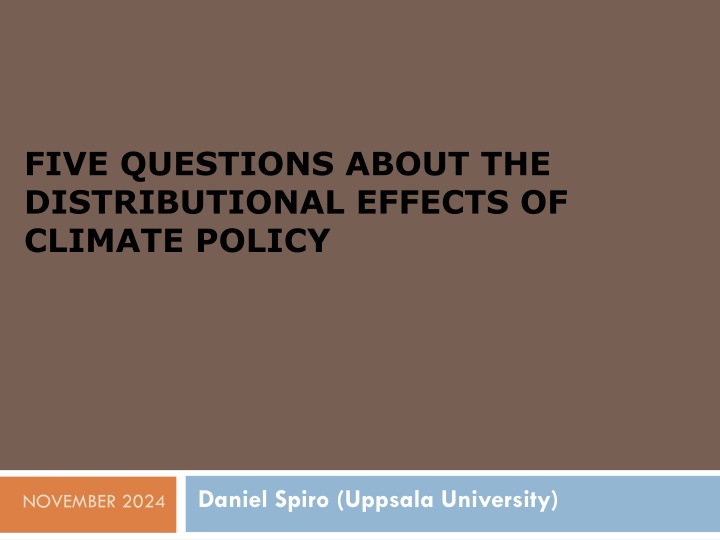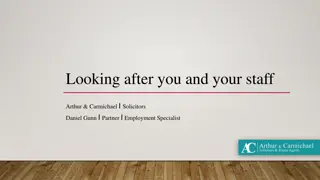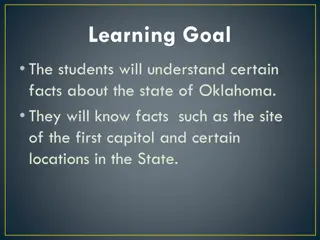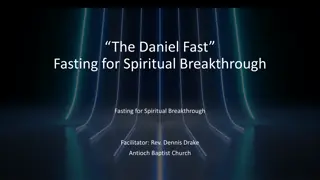
Distributional Effects of Climate Policy: Key Questions Explored
Explore the importance of distributional effects of climate policy and why they arise, along with compensatory mechanisms and tools. Delve into the impacts on various groups and strategies for addressing inequalities. Expert insights from Daniel Spiro of Uppsala University in November 2024.
Uploaded on | 1 Views
Download Presentation

Please find below an Image/Link to download the presentation.
The content on the website is provided AS IS for your information and personal use only. It may not be sold, licensed, or shared on other websites without obtaining consent from the author. If you encounter any issues during the download, it is possible that the publisher has removed the file from their server.
You are allowed to download the files provided on this website for personal or commercial use, subject to the condition that they are used lawfully. All files are the property of their respective owners.
The content on the website is provided AS IS for your information and personal use only. It may not be sold, licensed, or shared on other websites without obtaining consent from the author.
E N D
Presentation Transcript
FIVE QUESTIONS ABOUT THE DISTRIBUTIONAL EFFECTS OF CLIMATE POLICY Daniel Spiro (Uppsala University) NOVEMBER 2024
5 questions Why are the distributional effects of climate policy important? Why do they arise? What compensatory mechanisms exist? Which groups are (normally) the least compensated? Which compensatory tools should be used? 1. 2. 3. 4. 5.
1)Why are the distributional effects of climate policy important? Distribution/inequality is important. Important for the climate transition itself A. B. Long run investments Expectations of future climate policy + transition will take decades Reguires broad acceptability and legitimacy European climate transition as a model for others C. Protests make it look politically dangerous NB: Opposition may be transitory (e.g., smoking bans), policy can then be forced through But climate transition lasts for decades, so probably not relevant here
2) Why do distributional effects of climate policy arise? Carbon pricing affects CO2-intense households/firms/regions Change in capital s vs labor s share of income Long-run investments and credit constraints Long-run investments and coordination problems Information and rational decision making Gains from mitigation vary Electrification and gains from trade Externalities from green tech A. B. C. D. E. F. G. H.
2.A) Why do distributional effects arise? Carbon pricing and emission intensities Agriculture Manufacturing Services High environmental intensity* Medium environmental intensity Low environmental intensity Kongsamut, Rebelo, Xie, 2001 Engstr m et al., 2020
2.A) Why do distributional effects arise? Carbon pricing and emission intensities Income distribution: carbon pricing is regressive Industries with high energy and resource intensity Owners Workers Geographic locations Geographical distribution for households: rural> suburban/small towns > inner city (Men)
2C-E) Why do distributional effects arise? Long run investments, coordination and expectations For single household/firm most emission reductions happen due to non- marginal investments (change car, insulation, machinery, technology) Expectations of what others will do matters for my actions Two equilibria: gasoline car+gas stations vs EV+charging stations Brown system Green system
2C-E) Why do distributional effects arise? Long run investments, coordination and expectations Credit constraints can trap poor/rural households into high emissions Wrong expectations or lack of knowledge (financial literacy) Exagarbated by political ambiguity and if transition is delayed so forced to happen in short time Brown system Green system
2) Why do distributional effects arise? Which groups bear largest burden? Low-income households (esp car owners) Rural households Energy/CO2-intensive industries Workers therein Rural regions NOTE: High costs, low benefits, low ideological support correlate
3) What compensatory mechanisms exist? KONCEPTUAL CATEGORIES Market forces National policy tools Regional (EU) tools Community tools (non-political) 14 types
3) What compensatory tools exist? The welfare state and social insurance (the Nordic model) Adopt technology fast ( creative ) Causes unemployment and income shocks to certain groups ( destruction ) So provide insurance by progressive taxation, social security, free school/health/etc The welfare state deals with the distributional effects from climate policy that go through income Much of the adverse/distributional effects from climate policy is in the form of cost shocks: more expensive gasoline, energy, having to invest in new cars etc. The welfare state does not compensate for cost shocks
3) What compensatory tools exist? R&D and investment subsidies for industry Deals with cost shocks at industry level Hence also workers and regions with high such industry concentration are helped. Lumpsum transfers of CO2 taxes CO2 tax+transfer is regressive compared to nothing But not necessarily compared CO2 tax spent in other ways And not necessarily if there is carbon lock in of poor households Not necessarily good (geographical) targeting Income tax reduction with CO2 taxes Regressiveness depends on how income tax is changed Probably more visible
3) What compensatory tools exist? Investment subsidies (EV, heating, insulation ) Inefficient in classic sense Those who would do it anyway gain most But alleviates lock in And is a coordination device Targeted compensation based on households consumption ( grandfathering ) May affect incentives Unless based on historical consumption patterns or geography Then affects incentives if repeated/updated If not updated, then bad accuracy
3) What compensatory tools exist? Geographically differentiated climate policy Inefficiencies: arbitrage, paperwork, border problems Local revenue collection of nationally determined climate policy Windpower taxes Gasoline, diesel Subsidized electric power production Political leadership and unambiguity Subsidized/extended public transport Information CBAM Local coop
4) Which groups are (normally) the least compensated? Low-income households, esp car owners Rural households Energy/CO2-intensive industries Workers therein Rural regions/municipalities
5) Which compensatory policies should be used? Recall why distrbutional effects important Distributional/fairness important To make climate transition politically feasible and stable Show rest of world how it can be done A. B. C. Accuracy Efficiency Visibility
5) Which compensatory policies should be used? Distributional/fairness important To make climate transition politically feasible and stable Show rest of world how it can be done A. B. C. Should climate policy be adapted to distributional effects? Homo economicus: No, use other means of compensation (A) Real people: maybe (B,C)
5) Which compensatory policies should be used? Distributional/fairness important To make climate transition politically feasible and stable Show rest of world how it can be done A. B. C. Who should be compensated? A: Based on real effects B+C: The loudest (strategic loudness)
5) Which compensatory policies should be used? Distributional/fairness important To make climate transition politically feasible and stable Show rest of world how it can be done A. B. C. Should ideology be compensated for? A: No, they can vote B+C: Yes, correlates with costs (but strategic ideological complaints)
5) Which compensatory policies should be used? Distributional/fairness important To make climate transition politically feasible and stable Show rest of world how it can be done A. B. C. How much should we expect people to adapt by themselves A lot: Incentives are important A little: People do not have information and there are credit constraints
5) Which compensatory policies should be used? Many strong tools exist for targeting low-income households Use carbon tax + lump-sum transfer Or lower income tax Increase social insurance Or lower income taxes For rural households most tools are weak or imperfect, need several Differentiate policy geographicaly Collect carbon taxes locally Subsidize households green investments e.g., EV:s Subsidize electricity or public transport even at a loss General Make visible, e.g., in tax returns Political messaging should be precise and clear Slow but steady






















